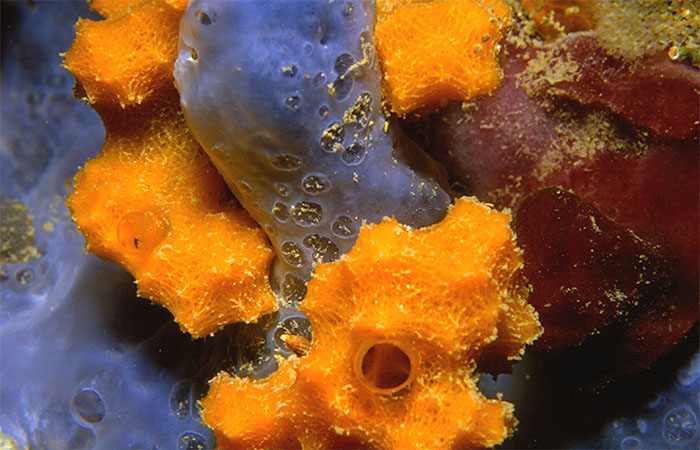
A member of the sponge genus Dictyonella in the order Bubarida. Image courtesy of Gery Parent.
Sea sponges have proven to be an abundant source of small-molecule natural products, some of which have led to development of numerous therapeutics, from eribulin (an anti-cancer medication) to kalihinol A, an anti-malarial compound).
Indeed, more than 9,000 unique molecules have been isolated from marine sponges. More than 30% of all known marine natural products come from sponges.
The vast majority of these molecules, however, aren’t the product of the sponges themselves, but rather the microorganisms living within their animal host. In a new paper, published February 21, 2023 in PNAS, researchers at UC San Diego report on discovering that some important enzymes appear to originate from the sponges themselves, and not from a microbial symbiont.
Terpenes are a large class of molecules and compounds that serve as biosynthetic building blocks. Steroids, for example, are derivatives of the triterpene squalene. All plants and animals produce squalene as a biochemical intermediate to creating steroids. Terpenes are primary constituents of essential oils in many types of plants and flowers, where they play roles in defending against herbivores, disease resistance and attracting pollinators. Some insects use terpenes as a form of defense and they are the primary ingredient in natural rubber.
The discovery that sponges may be direct contributors to new natural compounds from the sea, wrote the authors, suggests there is much more to be appreciated and many more benefits perhaps to be derived from these multicellular, multitalented organisms.
— Scott LaFee